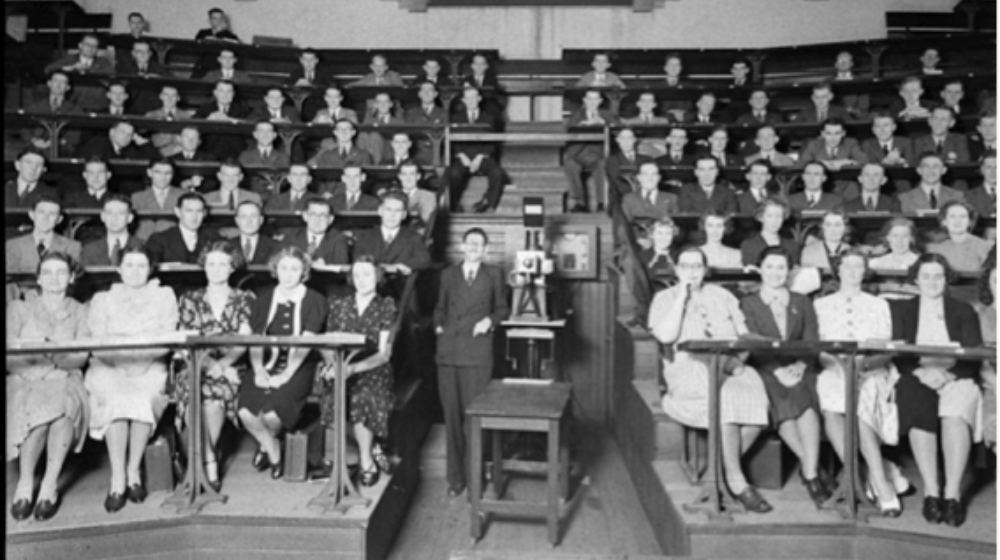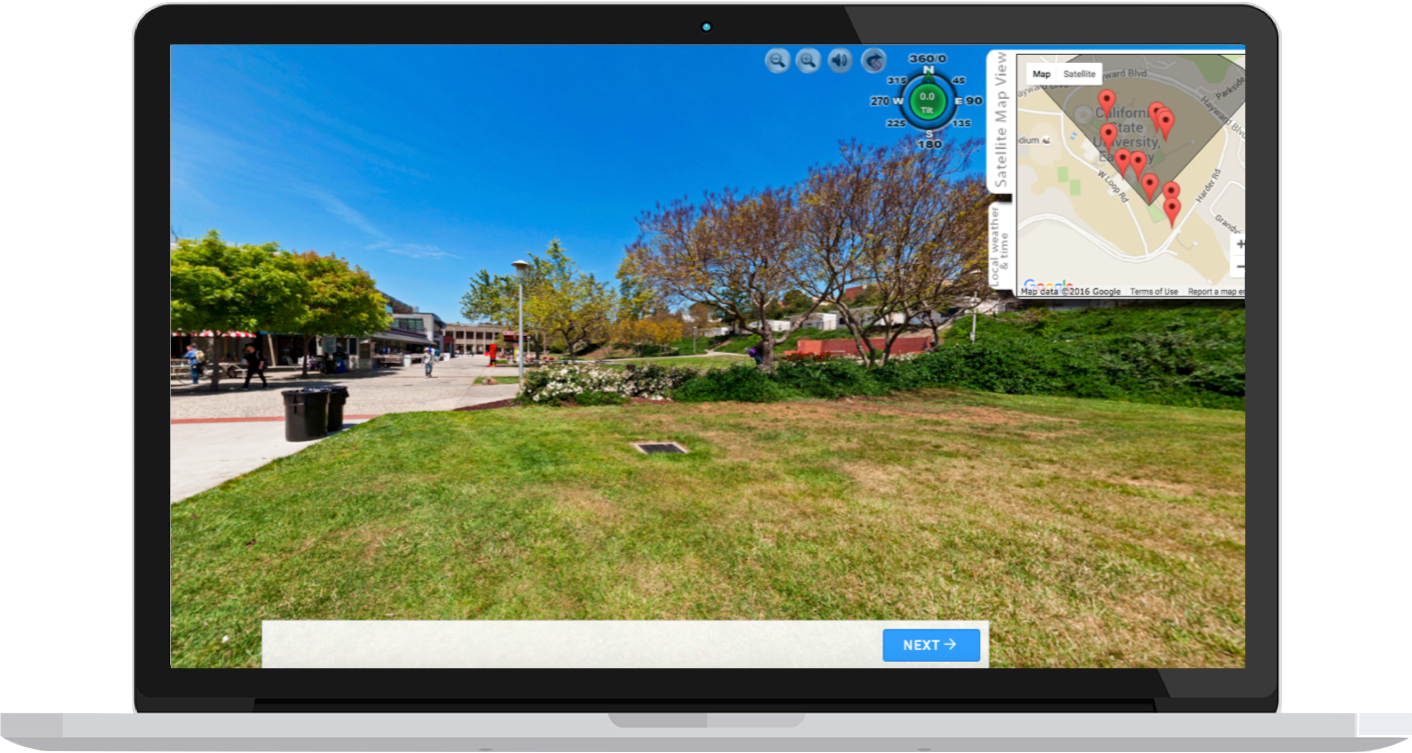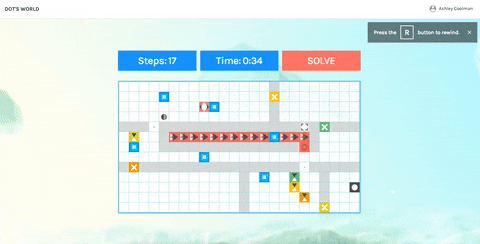Switch Back and Forth Between Passive and Active Studying
Keep Learners At The Center Of The Design Process
Definition of active learning
Active learning is any learning activity in which the student participates or interacts with the learning process, as opposed to passively taking in the information.
When given the opportunity to actively engage with the information they're learning, students perform better. It nurtures the brain, giving it an extended opportunity to connect new and old information, correct previous misconceptions, and reconsider existing thoughts or opinions.
"Don't learn to do, but learn in doing." –
Samuel Butler, author
Research into why active learning works
According to a study into learning-centered approaches to education, students learn more when they participate in the process of learning. Active learning is discussion, practice, review, or application. Problem solving. Exploring new concepts in groups. Working out a math problem on a piece of paper.
Active learning encourages your brain to activate cognitive and sensory networks, which helps process and store new information. Claire Hoogendoorn, New York City College of Technology wrote a good introductory article on the neuroscience of active learning. She summarized several studies, writing, "...learning is enhanced when multiple neural pathways are activated at the same time. In plain terms, the more we can activate students' brains in different ways, the more they learn. This means that engaging as many sensory, cognitive, emotional, and social processes in students will increase their learning potential."
What's more, Cornell University found that research suggests learner attention starts to wane every 10–20 minutes during lectures — which means instructors are continuously fighting to keep attention. Incorporating regular, varied active learning moments is a great solution to recapture an audience.
Unblurring the lines
The line between 'active' and 'passive' learning can be blurry. Isn't a student taking notes during a lecture actively engaged in a class, especially when compared to their peers sleeping or texting in the back of the room? Perhaps, at some point in time, active note-taking was the best we could hope for from our students.
A 1991 study on active learning called "Active Learning: Creating Excitement in the Classroom", the researchers (citing even earlier research) talked about the need to upgrade how we think about engaging our learners:
"...many faculty assert that all learning is inherently active and that students are therefore actively involved while listening to formal presentations in the classroom. Analysis of the research literature (Chickering and Camson 1987), however, suggests that students must do more than just listen: They must read, write, discuss, or be engaged in solving problems. Most important, to be actively involved, students must engage in such higher-order thinking tasks as analysis, synthesis, and evaluation." (Bonwell and Eison 1991)
The problem we see today is that students furiously typing or scribbling notes are more focused on getting every word down, rather than evaluating, understanding, and analyzing what it is they are meant to be learning. They have engaged with the professor, but not the material being relayed — which is the most important part.
In a world with a job market increasingly focused on independent critical thinking abilities, we must teach our learners how to go deeper and engage those higher-order thinking tasks. Reconsidering the degree and form by which students are actively participating matters if we want to truly impact long-term outcomes and futures.
Leaving a history of didactic instruction in the past
Didactic instruction — an authoritative, lecture-heavy approach to teaching in which the learner is fairly passive — turns the teacher into a dispenser of knowledge and the student into a mostly idle recipient. Students can still ask questions of the teacher to gain/broaden understanding, but although it doesn't have to be an 'all one way' approach it generally is fairly one-sided.

Didactic teaching and lecture can be dated back to the 14th century medieval times, when instructors read to students while they took notes. At the time, information wasn't easily accessible nor available, so this method solved for the problem of the age; large lectures halls were the best available method for sharing and spreading knowledge. "Education" for students became "take copious notes and memorize as much information as possible".
In the Age of Information, we can thankfully move forward and away from lecture-only models.
"Lectures alone are too often a useless expenditure of force. The lecturer pumps laboriously into sieves. The water may be wholesome; but it runs through. A mind must work to grow." ( Charles Wiliam Elliot 1869 )
Passive learning vs. Active learning
Teaching that remains a one-way transfer of information from instructor to student is now a widely-criticized pedagogical model, accepted as being a poor way to motivate students to learn. But those models can be updated:
- Passive learning is the lecture on deadly diseases, while active learning is the discussion on which diseases students have heard about and in what context
- Passive learning is providing the image of a cell which is already annotated, while active learning is providing the unlabelled image of a cell for students to explore and annotate themselves.
- Passive learning is the video watched in a dark classroom without thinking prompts or discussion, while active learning is the simulation which reacts to student interaction or pauses to ask formative questions.
Of course, there are times when passive learning is useful, e.g. scaffolding learners towards expertise more efficiently. But teaching without providing an opportunity to ask questions or discuss is, as attributed to Elliot above, like pumping information into a sieve; ultimately, learners will retain grains of new information, but most will be lost.
More and more instructors are incorporating some active learning approaches into their teaching.
What keeps educators from relying on active learning more often?
- It takes more class time, so instructors can't cover as much material in one class.
- Planning active learning exercises takes more prep work, which instructors can't always spare.
- Many instructors have done well as lecturers thus far, so they are less inclined to overhaul their current teaching methods.
- Instructors lack the support, materials, and budget from their academic institution to try new teaching methods.
- Large class sizes prevent the realistic implementation of many active learning strategies.
The most common deterrent we hear from instructors is the combination of the final two reasons — problems with support and scalability. Instructors need more teaching assistants, more space, or more budget to buy materials for in-class activities. Ultimately, and unfortunately, implementing more active learning can feel like a hassle.
Enter Active Learning Technology
As Arizona State University has pointed out, it is a popular misconception that active learning can only occur in small, face-to-face learning environments. Active learning can also take place in large-enrollment courses, hybrid courses, and online courses through the intentional use of cost-effective technology.
"Intentional" is important to acknowledge because using technology does not innately provide a positive active learning experience. In fact, digital learning technology has generally performed poorly in the past because most implementations result in passive practices, e.g. lifting lectures or artifacts of lectures (like Powerpoint presentations) and putting them online.
For example, if you're trying to teach students the relationship between brightness and distance, you could create an online lesson that gives the formula, provides a few examples, and asks students to memorize everything. But we know that's no better than reading a traditional textbook.
Rethinking how you teach using technology
Technology-enabled active learning is about the larger design of the lesson. In one example, Professor Ariel Anbar constructed an active approach to teaching the relationship between brightness and distance.
He designed an online lesson that asks students what they think the about relationship between brightness and distance, and then has them test and evaluate their hypotheses. To do so, students explore a simulation of our universe, evaluate the brightness of different stars alongside their "current distance" from that star, and discover the relationship between brightness and distance on their own.
In taking on this exploration, students have engaged several neural pathways and truly dug into the material in order to learn. Professor Anbar coined this approach "Education Through Exploration" and this lesson is now part of a fully online, adaptive, and interactive course called HabWorlds.
Here are a few other ways to bring active learning to your class through technology:
- Discussion Boards — Have students take what they learned in class or readings and continue the discussion online. Require students to select something they found interesting in the material, do additional research, and write a few paragraphs about what else they have learned on the topic. Additionally require students to respond to what their peers have shared.
- Online Adaptive Tutorials or Virtual Labs — Use an elearning platform, such as Smart Sparrow, to build an online tutorial or lab experience where students can work through material or practice a skill as often as necessary, at their own pace, in their own time.
- Virtual Field Trips — Several instructors using Smart Sparrow have created amazing "field trip" experiences that allow students to explore out-of-reach places around the world from a first person point of view. We've seen archaeological dig sites, the Australian outback, and even their university campus. Students can click around to learn more about what they're seeing, answer questions when prompted by their "guide", and receive personalized feedback to their responses.
Not every teaching moment needs to be maximally active — that simply isn't realistic and it's not always meaningful. But every learning experience should incorporate active learning at some point.
 Example of a virtual field trip created by the California State University East Bay, to introduce new students to campus before they arrive. This is one of several explorable locations available in the online orientation courseware.
Example of a virtual field trip created by the California State University East Bay, to introduce new students to campus before they arrive. This is one of several explorable locations available in the online orientation courseware.
The state of edtech and active learning platforms
Today's digital learning technology allows instructors and learning designers to create highly-interactive lessons that can be used as in-class activities, as take-home assignments for flipped/blended courses, or as one module of a fully-online class.
With the right technology, active learning experiences can be scaled to hundreds or thousands of learners. They can also meet accessibility standards while still providing a good experience for learners with disabilities, surpassing the traditional classroom in the ability to support all learners.
It's always important to note that some activities lend themselves well to interaction from any device — and some don't. If you want to create active learning experiences that are equally wonderful experiences on desktop, tablet, and mobile, you must plan ahead and take into consideration the size, layout, and complexity of your activity.
Interest in active learning over time
According to Google Trends reporting, 'active learning' and 'interactive learning' have enjoyed a pretty steady following since 2004 (which is as far back as Google Trends data goes), with 'active learning' recently seeing a boosted interest. Other loosely-related terms such as 'learning by doing' and 'project-based learning' have been less popular in comparison, but still capture ongoing interest.
Numbers represent search interest relative to the highest point on the chart for the given region and time. A value of 100 is the peak popularity for the term. A value of 50 means that the term is half as popular. A score of 0 means there was not enough data for this term.
What do we think it means that 'active learning' has replaced 'interactive learning' as the frontrunner in our minds and Google searches? Perhaps interactive learning originally came alongside the question, "How do I get students to interact with my lesson?" which has been left behind as instructors learned that 'just doing something' is not good enough… whereas active learning is a recognized pedagogical practice with research-based underpinnings that showcase explain why it positively impacts student learning.
Active learning in the global market
In the 2017 Digital Learning Innovation Report, which surveyed university educators across Australia, the majority of instructors reported that they currently employ some type of active learning technology. That included discussion boards (75%) and tools specializing in interactive learning (65%). The interactive learning options outstripped more passive learning options, such as lecture capture (63%) and presentations (49%).
In the United States, the Department of Education created the National Education Technology Plan (NETP), a plan articulates a vision of equity, active use, and collaborative leadership to make everywhere, all-the-time learning possible. They also shared a Higher Education supplement to examine learning, teaching, leadership, assessment, and infrastructure in the context of higher education. About active learning, they shared:
Technology can provide instructors with the means of creating active learning environments that connect students with content in different ways… For example, rather than traditional lectures, instructors using these tools can create active learning environments that encourage students to collaborate, participate in inquiry based learning, and jointly produce content that demonstrates their learning. In addition, learning can be organized around real-world challenges and scenarios so students can master skills and work together to find collaborative solutions.
In recommendations for improving teaching practices through technology, the NETP report went on to say, "Instructors should use technology to reimagine courses in ways that more actively engage students, are more inclusive of different learning needs, and enable a collaborative and flexible learning environment."
Empowering unique teaching styles
When incorporating technology-based instruction, educators should still be able to flaunt the engaging stories, quirky anecdotes, and fun activities that they have tested and relied upon in the classroom. Digital learning tools can make life simpler for professors, help them reflect on their pedagogy, and make their teaching more powerful without sacrificing their unique, honed teaching voice.
Smart Sparrow encourages educators to create learning activities — old standbys and new ideas — for digital lessons. Our library of learning components offers 30+ different ways to get students to engage with the material. In addition, instructors and learning designers can import existing simulations or reach out to our team for support in creating a completely new activity.
 Game "Dot resiliency series" courseware created by the Northest Resiliency Consortium (NRC), used to give learners insight into their mental state during challenge tasks.
Game "Dot resiliency series" courseware created by the Northest Resiliency Consortium (NRC), used to give learners insight into their mental state during challenge tasks.
Combining active learning with adaptive learning
The most powerful part of using Smart Sparrow to provide active learning experiences is the ability to personalize the lesson based on an individual's actions. Many digital simulations and activities limit instructor insight to "complete/incomplete", but Smart Sparrow can collect data on every click and length of interaction and then adapt what the student sees next accordingly — this can't be done with most learning tools or simulations.
What does "adaptive learning" mean for Smart Sparrow? Our adaptive platform relies on expert-model adaptivity, where an instructor or learning designer creates rules such as "If THIS happens, then do THAT" (IFTTT) to guide students' digital learning experiences.
This is important because it means individual educators maintain complete control over what their students see, when they see it, and why they see it. Adaptivity rules can be easily updated at any time by an instructor, allowing even non-technical instructors to take full advantage of personalization at scale. Examples of rules-based adaptivity depending on activities include:
- If a student is completing a virtual lab simulation and must move the beaker from the shelf to the desk, but they move a pipette instead, then feedback can be provided to correct and explain the mistake.
- If a student is completing a fill-in-the-blank activity and it takes five attempts to submit the correct answers, then the lesson could provide selected remedial content next.
- If a student tries to skip through screens too quickly (faster than they can possibly read), then provide a popup that encourages them to slow down.
- If a student is speeding through a lesson, answering every question correctly, and you think this indicates existing mastery of the content, then ask them if they want to skip ahead to the next topic or perhaps move onto advanced material. If they say yes, move them onward. If they say no, continue along the original path.
Learning analytics, data, and reports to improve active teaching
A data-informed approach to digital learning means instructors can assess the efficacy of their teaching methods to help students achieve better outcomes. Looking at Smart Sparrow's analysis and reporting tools, instructors know exactly how students are engaging with activities, where they're getting stuck, and how they're performing in the class overall.
Moreover, instructors and learning designers can also update content at any time to reference current events, so learning experiences never feel outdated.
Play with real-world examples of active learning experiences
Switch Back and Forth Between Passive and Active Studying
Source: https://www.smartsparrow.com/what-is-active-learning/
0 Response to "Switch Back and Forth Between Passive and Active Studying"
Post a Comment